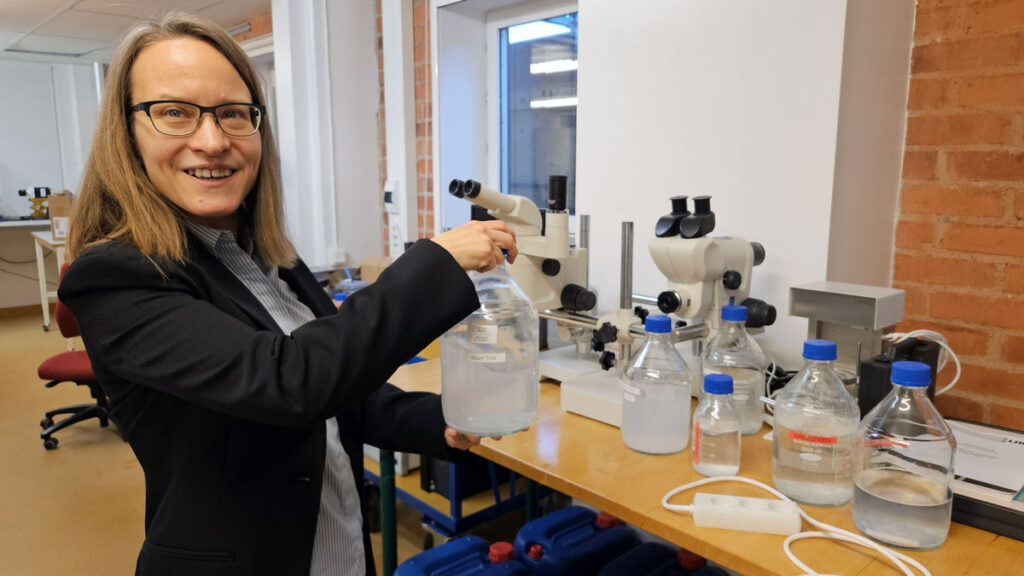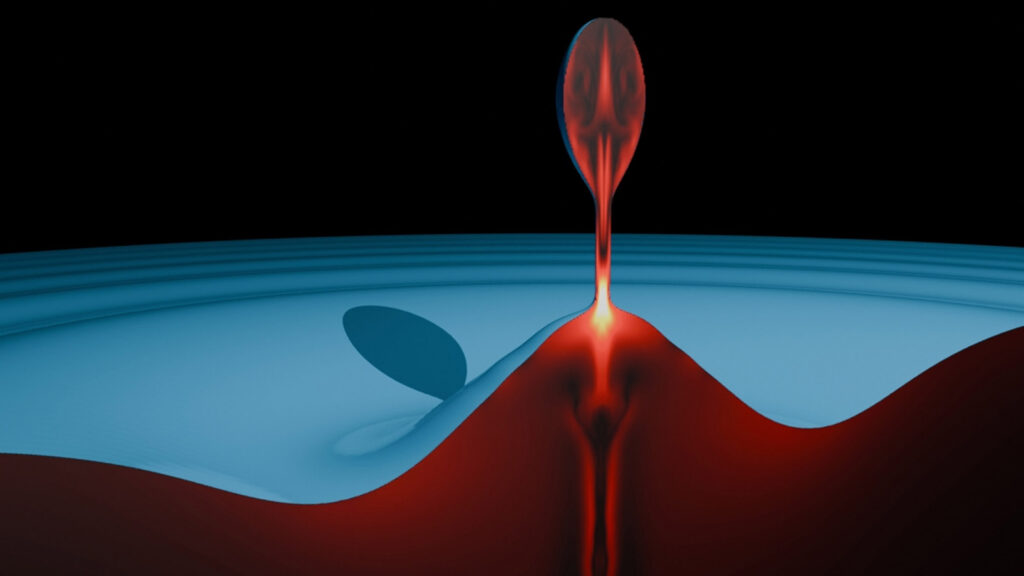Outi Tammisola: Studying elastic turbulence in complex liquids
Outi Tammisola, Professor in Fluid Mechanics at KTH Royal Institute of Technology, is studying how the flow of complex liquids can be improved by adding polymers to create elastic turbulence. The models they are running require lots of computing power.

Outi Tammisola is a Professor in Fluid Mechanics at KTH Royal Institute of Technology. She is leading a group in a project called INTER-ET, Interaction of Elasto-Inertial Turbulence and Material Microstructure. In December 2024, the European Research Council, ERC, awarded her a EUR2 million Consolidator Grant. This was her second ERC grant after having previously received a Starting Grant.
The project aims to better understand how the flow of complex liquids can be improved by adding polymers to create turbulence. For instance, transporting water or oil in pipes over long distances requires a lot of pumping energy, due to the resistance.
“But if you add just 0.5 per mille of polymers in these liquids, you can reduce the resistance significantly, by up to one third. They are actually doing this on the Trans-Alaska pipeline.”
Polymers creating elastic turbulence
This is also beneficial in microfluidics, such as lab-on-a-chip applications. When mixing two fluids in a very small tube, mixing occurs very slowly by diffusion. Mixing by turbulence is much faster. Mixing, heat transfer and chemical reactions can be boosted when adding a tiny amount of polymers, which create elastic turbulence.
“This is fundamentally what we are studying in this project: When will this elastic turbulence appear, and when will it not? What happens when you add particles to the polymeric fluid, and where will these particles go – will they kill the elastic turbulence? Nobody knows!”
Complex and demanding models
Research in the field of turbulence has so far mostly focused on water, simply because other liquids have been too demanding to model. The principle of adding polymers to improve flow was understood already back in the 1950s, but it is only in the recent 20 years that computers have become powerful enough to do the processing.
“Now we finally have algorithms for these complex liquids that are actually scaling up to thousands of processors. We never had that before. And those are the algorithms that we are developing and cross-validating with experiments. The models have incredibly complex dynamics. Simulating them requires so much power.”

Her group is predominantly using CPU resources on Dardel and Tetralith but is increasingly implementing a hybrid CPU/GPU setup. They are also experimenting with machine learning on the Alvis resource. Occasionally, when running very large simulations, she applied directly with EuroHPC for access to EU supercomputers, when her NAISS allocations were not sufficient.
“We are really looking forward to the new supercomputer Arrhenius. It will be of great benefit to us!”
Active in NAC
Outi Tammisola is also a member of the NAISS National Allocations Committee, NAC, which makes decisions about who will be granted access to large resources on NAISS systems. Is there a risk of a conflict of interests?
“I’m not involved in decisions related to my proposals. When they are being discussed I leave the room and let the others decide.”
“It has been very interesting for me to gain a better understanding of how proposals are evaluated and what is regarded as important,” Outi Tammisola concludes.